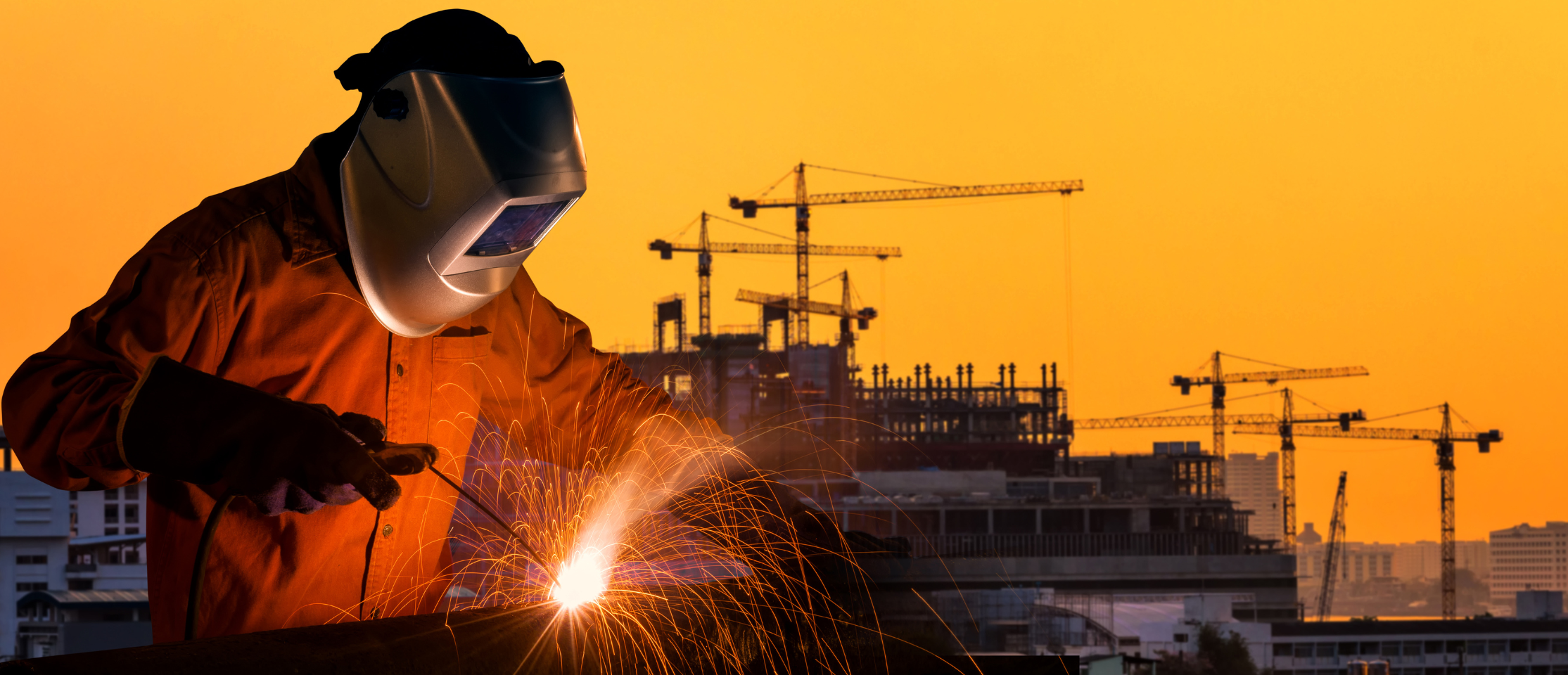Wearing Protective Equipment For Welding
28th Jul 2024
Electric arcs and high heat are used to unite metal components during the crucial industrial operation of welding. Although welding allows us to build strong structures, workers who do not take the necessary safety procedures run a serious risk. Wearing the proper protective gear is a crucial component of welding safety. This blog post will examine the value of protective gear for welding, go over important factors to think about when selecting protective gear, and list a few must-have things to guarantee the highest level of comfort and safety in the welding shop.

The significance of wearing safety gear during welding
Numerous risks are produced during the welding process, such as high heat, sparks, splattered molten metal, and dangerous UV and IR radiation. Wearing protective clothing helps to prevent burns, wounds, abrasions, and other potential injuries by putting a barrier between the worker's body and these hazards. It is essential for reducing the chance of electric shock, arc flash, and exposure to harmful particles or chemicals.
Selecting safety gear for welding
The following elements should be taken into account when choosing welding protection gear:
- Flame Resistance: Materials that are able to tolerate high temperatures and stop ignition in the event of contact with sparks or flames should be used to make welding clothing.
- Heat Insulation: To reduce the chance of burns, the clothes should offer enough protection from radiant heat.
- Durability: Sparks, molten metal, and sharp objects can all be present in welding conditions, which can be tough. Clothes with strengthened seams and long-lasting fabrics will last longer and offer greater protection.
- Comfort and Mobility: Because welding is a physically demanding job, it's critical to wear clothing that breathes well and permits flexibility of movement to avoid being tired or uncomfortable.
- Protection from UV and IR Radiation: The UV and IR radiation produced by welding operations is dangerous. Seek apparel that provides suitable shielding against these radiation kinds to avoid skin damage and long-term health consequences.
Essential welding safety gear
- Welding Helmet: To shield the face, eyes, and neck from sparks, radiant heat, and dangerous light emissions, a high-quality welding helmet with the appropriate filter lens is important. Because they darken instantly when the arc is struck, auto-darkening helmets are a popular option.
- Welding Jacket: The chest, arms, and neck are shielded from sparks, molten metal, and UV rays by a flame-resistant welding jacket made of materials like leather or fire-resistant cotton.
- Welding Gloves: Protect hands and wrists against burns, wounds, and sparks with strong, heat-resistant gloves reinforced with leather or Kevlar.`
- Welding Apron: To protect the lower body and legs from sparks and splattered molten metal, an apron composed of flame-resistant material is worn.
- Welding Pants: Protecting the legs and lower body, flame-resistant pants are composed of sturdy materials like leather or cotton that withstands flames.
- Welding Boots: The feet are shielded from falling objects, sparks, and electric shock by sturdy, fire-resistant boots featuring non-slip soles and steel toes.
Pockets on flaps
All exterior pockets, with the exception of side pockets below the waist that don't protrude farther than ten degrees forward of the seam, must be flapped in order to conform with EN ISO 11611.
Rule satchels
On one or both legs, a single rule pocket with an opening no bigger than 75 mm is allowed behind the side seam.
Strength to rip and tensile
Tensile strength must be at least 400N and tear strength must be at least 15N for class 1 and 20N for class 2 in order to meet EN ISO 11611 standards.
Although welding is an inherently dangerous procedure, workers can greatly lower their risk of accidents and long-term health problems by wearing the proper protective gear. Prioritising features like flame resistance, heat insulation, durability, comfort, and protection from UV and infrared radiation is essential when choosing welding protective apparel. Purchasing high-quality protective gear, such as coats, boots, aprons, gloves, helmets and pants, guarantees comfort and safety in the welding workplace.

 British Pounds
British Pounds
 Australian Dollar
Australian Dollar
 Canadian Dollar
Canadian Dollar
 Euro
Euro
 US Dollar
US Dollar
 FREE UK DELIVERY ON ALL ORDERS OVER £75
FREE UK DELIVERY ON ALL ORDERS OVER £75




